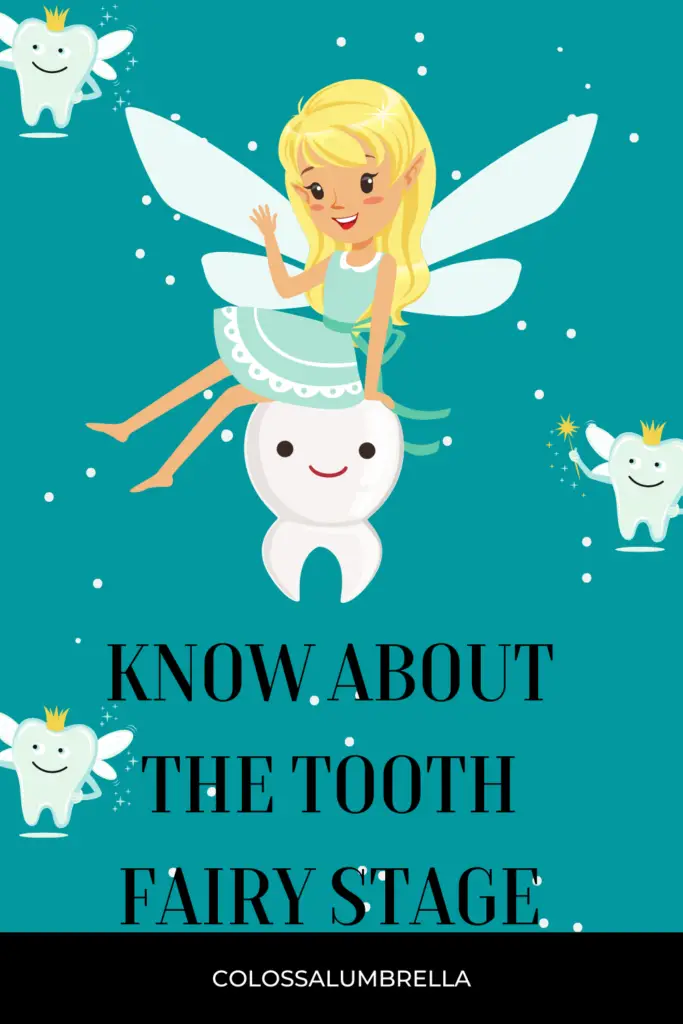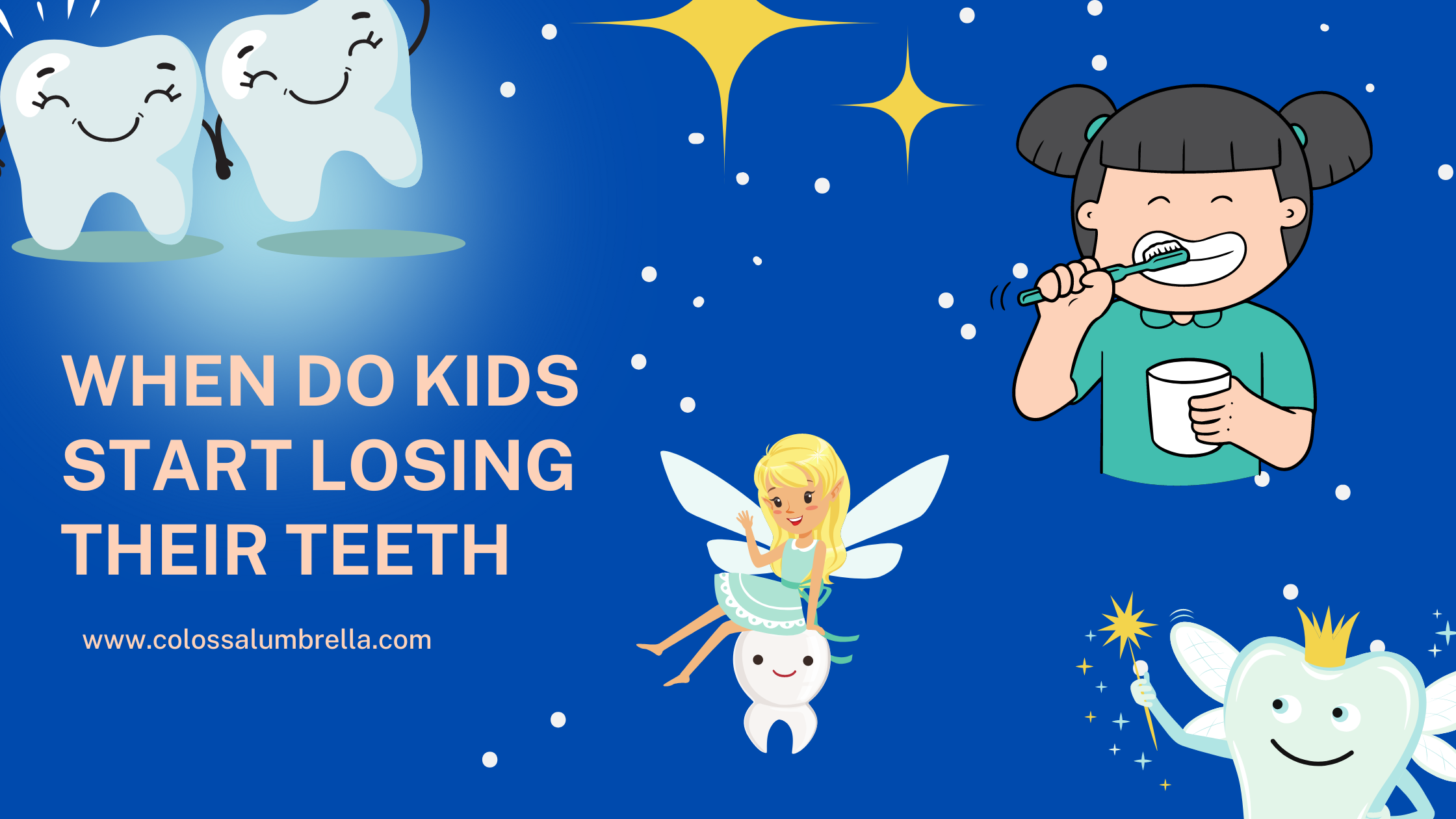When your child is born, all his teeth are present. In the first few years of life, however, some of child’s teeth start falling out. By the time they reach the age of 12, most kids have lost all their primary teeth (child’s baby teeth) and grown secondary ones in their place. This article covers babies teething late and when do kids start losing their teeth.
The new teeth are hidden behind gums until they come up through the jaw and break through the surface of the gums as permanent teeth. The Teething process begins at an average age 6-7 years old and is usually completed by around 13-14 years old. However, there’s no standard age for losing one’s baby teeth or growing permanent adult teeth in their place. Every kid grows at a different pace, so there’s no universal timeline for these events. Nonetheless, here’s an overview of when do kids start losing their teeth based on general guideline.
What are the signs that a child’s teeth is fallen
As a baby tooth is formed, it has a small root that extends into the jaw to attach it to the bone. Once a child’s permanent teeth comes in, its roots extend deeper into the jaw, further anchoring their position. When the baby teeth are ready to come out, the ligaments and blood vessels that support them are much shallower, so they easily break off.
A sudden fall or blow to the child’s mouth is enough to dislodge the loose baby tooth when it is no longer supported by the bone. The tooth’s sudden departure often causes redness and swelling in the gums around the tooth, as well as some pain. The exposed roots in the gum can be very sensitive to pressure. Teeth that fall out on their own tend to get swallowed. If this happens, the child can choke on the tooth, particularly if it breaks into pieces.
Can teething cause bad breath in toddlers and 6 simple tips for reducing bad breath
Why Do Teeth Fall Out During Childhood
Human teeth are different from those of other animals. Humans are the only animals who go through this process of natural tooth mortality. There are a few reasons why kids lose their primary teeth –
- The first molars (the two teeth at the back of the mouth) lose their mineralized enamel and disintegrate, so they have to come out.
- The rest of the primary teeth are usually shed because of the eruption of permanent teeth that push them out of their sockets.
- Some primary teeth are removed to make room for permanent ones.
When do kids start losing their teeth?
The order of tooth loss varies from child to child. The first teeth to come out are the bottom ones in the lower jaw, the two upper incisors and two lower incisors that are located between the lips and the two canines that are close to the top front teeth. Around 6-7 years of age, the two lower central incisors are usually the next to fall out.
A few months after, the two upper central incisors ones are shed. Around the age of 9-10, the two upper and two lower lateral incisors are lost, as well as the two uppers and two lower first premolars. The two upper and two lower second premolars are often the last teeth to be lost, around the age of 12-14.
What is babies teething late? Read about how delay in teething process impact development
How to Care for Empty Gums?
After a tooth is lost, the gum gradually heals and seals the empty socket that remains. The tissues around the empty socket can be very sensitive, so kids should avoid pressing them with their fingers or other objects that come in contact with the mouth. Kids usually use fingers to remove food particles stuck in mouth. This could lead to cavities. Teeth brushing and flossing are still important even after a tooth is lost.
Once the tooth is gone, kids can use a soft toothbrush (such as a child’s size, a non-electric toothbrush such as a “smiley face”) to clean the empty space. Dental floss should be used to clean between the teeth, but it should be done gently. They should be offered healthy soft foods like vegetable soup
Do babies gums swell when teething & 5 simple ways you can help a teething baby
Tips for Kids Who Have Just Lost Their Teeth
Kids who have just shed their first baby tooth should be reassured that their mouth will be just fine without it. They may be upset at the sudden disappearance of their primary teeth, but there are things that parents can do to make the transition easier
Let your child see the loose tooth. Show him where it is coming out of the gums and let him handle it (with your supervision, of course).
Arrange for a visit to the dentist to have the lost tooth removed. Kids who have had the opportunity to look at the loose teeth may not feel so sorry to see it go. Give your child something to chew on. A piece of soft, chewy food like a carrot, a banana, or a chewy piece of bread like a pumpernickel can help soothe a sore mouth.
Make sure your child continues with his daily oral care routine, even though he doesn’t have teeth to brush to avoid tooth decay in future.
How to Help Kids Cope With Tooth Loss?
- Advise your child not to bite his nails as it can cause an infection in the area around the tooth.
- Encourage your child to keep up with oral care even though he doesn’t have teeth to brush. This would directly result in healthy teeth in future.
- Give your child a gentle cleaning with a soft washcloth or a gauze sponge to clean around the empty sockets, while being careful not to push the gum line back into the sockets.
- Help your child to choose a toy that is dedicated to holding the loose tooth.
- Let your child know that losing teeth is a normal event and that all kids lose their milk teeth sometime in their lifetime.
- It is a a good idea to plan regular visits to child’s pediatric dentist to keep a track of oral hygiene. Your child’s dentist can definitely add value in achieving this big milestone.

Conclusion
So when do kids start losing their teeth? As every child grows, their teeth will fall out and be replaced by a new set of adult teeth. While losing baby teeth is one of the major milestones and a natural part of growing up, it isn’t always comfortable. Taking care of children’s teeth and helping them to cope with tooth loss can be a challenge, but it’s well worth the effort.
With the right child tooth loss tips, your child can be happy and healthy even without their baby teeth. Kids don’t know what’s happening to their teeth, so it’s our responsibility as parents to explain how the natural process works. The best way we can help our kids cope with tooth loss by being understanding, showing them how to clean their teeth, and providing them with the tools they need to make themselves comfortable.

3 thoughts on “When do kids start losing their teeth – Complete guide on Tooth fairy stage”
Comments are closed.